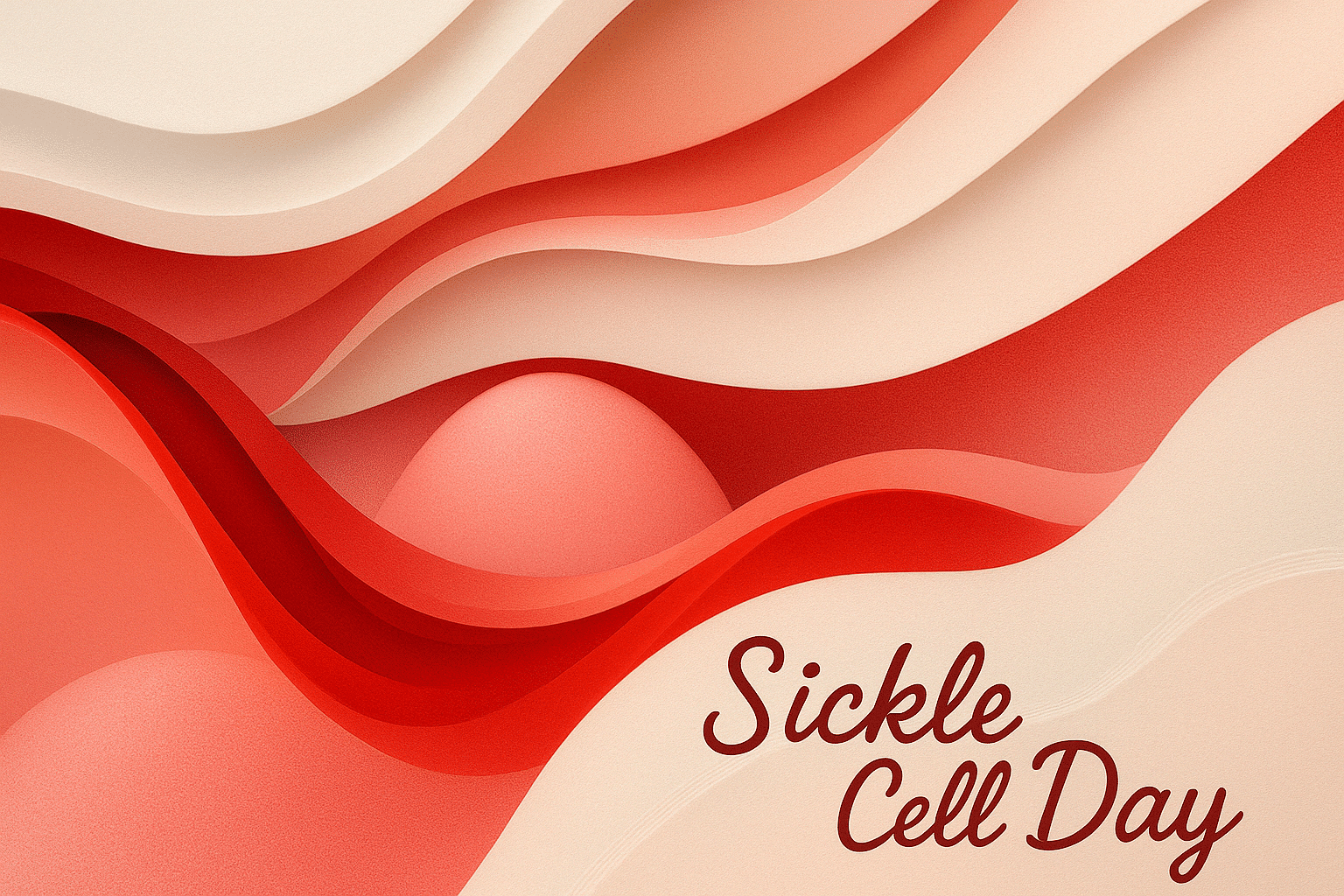What is World Sickle Cell Day?
World Sickle Cell Day is held every year on June 19 and is observed worldwide. The day raises awareness of sickle cell disease, a serious inherited blood disorder that affects millions of people. The condition causes red blood cells to take on a sickle shape, which limits their ability to carry oxygen and leads to pain, fatigue, and organ damage.
The purpose of World Sickle Cell Day is to increase understanding, reduce stigma, and support research and access to care. It highlights the importance of early diagnosis, treatment options, and support for individuals and families living with the condition.
In the Netherlands, the day is recognised by medical organisations, hospitals, and advocacy groups. Public campaigns, information sessions, and media coverage focus on raising awareness among healthcare providers and the general public.
History and Origin
World Sickle Cell Day was established by the United Nations to draw international attention to the disease. The choice of June 19 was intended to mark a global commitment to improving outcomes for those affected by sickle cell conditions, especially in regions where resources are limited.
The day was created in response to the fact that sickle cell disease is one of the most common genetic disorders in the world, yet remains underdiagnosed and undertreated in many areas. It was also meant to address health disparities and ensure that people living with the disease are not overlooked.
Since its creation, World Sickle Cell Day has grown into a platform for collaboration between patient groups, researchers, policymakers, and healthcare professionals. Activities range from blood drives to conferences and community outreach programs.
Who participates in World Sickle Cell Day?
- Healthcare professionals: Doctors, nurses, and clinics use the day to educate patients and share new treatment developments.
- Advocacy groups: Patient organisations host events, share personal stories, and push for policy changes.
- Researchers: Scientists highlight breakthroughs in gene therapy, pain management, and early intervention.
- Families and caregivers: Those caring for individuals with sickle cell disease share their experiences and challenges.
- Schools and youth groups: Educational programs raise awareness among students and young people through workshops and storytelling.
Slogans and Themes
World Sickle Cell Day promotes messages of hope, equality, and access to care. Slogans often include phrases like “Shine the Light on Sickle Cell,” “Know Your Status,” and “Hope Through Research.” Themes focus on health equity, new treatment options, and improving quality of life for patients around the world. These messages help break down stigma and encourage early diagnosis and support.
Colors, Symbols and Patterns
Colors
- Red: Represents blood and the core nature of the disease.
- Black: Used in many campaigns to honour the communities most affected and to symbolise resilience.
- Gold: A symbol of value, strength, and the fight for better care and understanding.
Symbols
- Sickle-shaped cell: Represents the abnormal red blood cell shape that defines the condition.
- Awareness ribbon: Often red and black, used in campaigns, social media posts, and events.
- Heartbeat icon: Symbolises life, strength, and the fight for better treatment.
Patterns
- Cellular textures: Backgrounds based on microscopic views of red blood cells, used in infographics and posters.
- DNA helix designs: Reflect the genetic nature of the disease and the role of science in finding cures.
- Light rays: Represent shining attention on a disease that is often overlooked.
Most used hashtags
- #WorldSickleCellDay
- #SickleCellAwareness
- #HopeForSickleCell
- #KnowSickleCell
- #ShineTheLight
Why is World Sickle Cell Day important?
World Sickle Cell Day is important because it gives voice to a global community that often faces medical neglect and social stigma. The disease brings daily challenges, from pain and fatigue to hospital visits and limited treatment access. The day brings people together to push for research funding, better care, and stronger public health policies.
The day also plays a role in education. Many people are unaware of their carrier status. Early testing and counselling can help families make informed health decisions. Greater awareness leads to better support systems, stronger advocacy, and real progress toward better care and, eventually, a cure.
World Sickle Cell Day reminds the world that attention, science, and compassion can change lives.
Features
June 19: Sickle Cell Day
Why do you keep falling for the same type?
Read the article Lovemaps: the hidden blueprint of our love.

